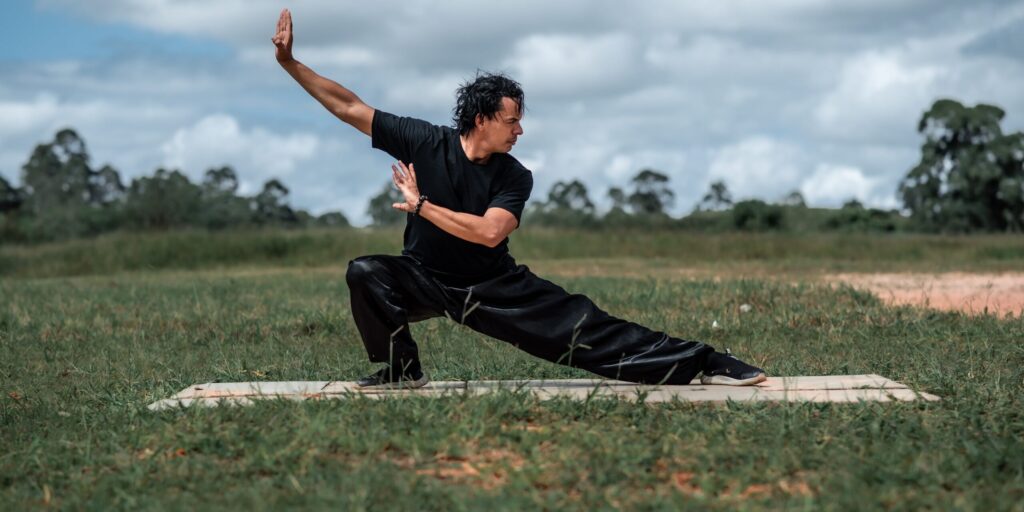Read time 4 minutes
Rachit: –
It felt great practicing some graceful Tai Chi moves. I found it extremely helpful in maintaining my health condition. However, I could not continue it for long as my body was not sufficiently strong enough to withstand the moves.
Tai Chi is the Difference Between Life and Death
Tai Chi can reinstate the flow of chi. Put simply, chi is that which gives life. In terms of the body, chi is that which differentiates a corpse from a live human being. To use a Biblical reference, it is that which God breathed into the dust to produce Adam. It is the life energy that people hold on to when they think they are dying. A strong life force makes a human being alive, alert, and present. A weak life force results in sluggishness and fatigue. A strong man is one with strong lungs and a weak man is one with weak lungs, according to a Chinese saying.
The concept of ‘life force’ is found in most ancient cultures of the world. It is particularly evident in Chinese, Japanese, and Korean culture, where the world is perceived not purely in terms of physical matter, but also in terms of invisible energy.
In India it is called prana; in China chi; and Japan ki. In some Native American tribes, it is called the Great Spirit. For all these cultures and others as well, the idea of a life force is central to their forms of medicine and healing. For example, acupuncture is based on balancing and enhancing chi to bring the body into a state of health. At its highest level, acupuncture involves injecting chi at just the right time and place and in the right amount to reinstate its natural flow in the patient. Energy can be increased in a human being. Consequently, the development of chi can make an ill person robust. It helps a weak person in vibrancy; it can enhance one’s mental capacity, too.
The concept of chi extends beyond the physical body, to the subtle energies. These energies are known to activate all human functions, including emotions and thought. Unbalanced chi causes you to become emotionally agitated and distressed. Balanced chi causes your emotions to become smooth and more satisfying. From the perspective of thought, when your mental chi becomes more refined, it enhances your creativity at all levels. Including art, business, relationships, and child-rearing. Spiritual chi makes it more possible for us to personally enter into higher states of consciousness. It lies at the heart of the religious experience.
Chi embodies antithetical qualities: it can be used for healing, or it can be used for breaking stones. Tai Chi and other forms of Taoist martial and healing arts, help you develop subtle chi energy. In the Tai Chi form, the mind initiates the flow of chi, which, in turn, initiates each movement. However, each movement intensifies the chi. Thus, there is a synergistic effect that greatly escalates the flow of chi over time.
Many of us become slightly nervous when we encounter someone who seems to possess more talent than we do, but in the end, it’s the energy that prevails. Talent is the raw material of progress, but I doubt if it makes life any richer in the absence of energy. Those who have won fame and fortune through talent are those who devote every ounce of energy they can summon to putting it into operation.
My formula is:
Energy plus talent and you are king; energy and no talent and you are a prince; talent and no energy and you are a pauper.
Praise for Tai Chi:
“Most of our inner energy remains unused and goes to waste. We don’t know how to channel this inner energy for the greatest gain. Tai Chi teaches you to work on that reservoir of inner energy. From a fledgling student of Tai Chi to an expert, to a messenger, Sensei Desai has arrived.” – Asian Age
“Sensei Desai’s T’ai Chi movements are more potent than pretty.” – Time Out, Mumbai
“I’m mesmerized by T’ai Chi. T’ai Chi has calmed me tremendously. I have observed a noticeable improvement since I started T’ai Chi a year ago. Thank you, Sensei, for being not only a patient and inspiring teacher but also a good human being.” – Jennifer Mirza, Executive Producer, Saeed Akhtar Mirza Productions
The post has been submitted by:
Sensei Sandeep Desai is a Master of Tai Chi, Yoga, and Martial Arts. He has several international Accolades to his name.
He is credited with introducing the original Chen-style Tai Chi Chuan Practical Method. He has trained and in Chenjiagou village, the birthplace of Tai Chi in China. In recent times, his experience has gone even deeper.
He has achieved the unique distinction of becoming the only Indian to successfully finish the advanced ‘The Full Time Training’ in China under the strict supervision of Chen Zhonghua, the Standard-bearer of the Chen Style Tai Chi Chuan Practical Method.
DISCLAIMER
The views expressed above in this article are the author’s own and do not represent any kind of medical advice.


